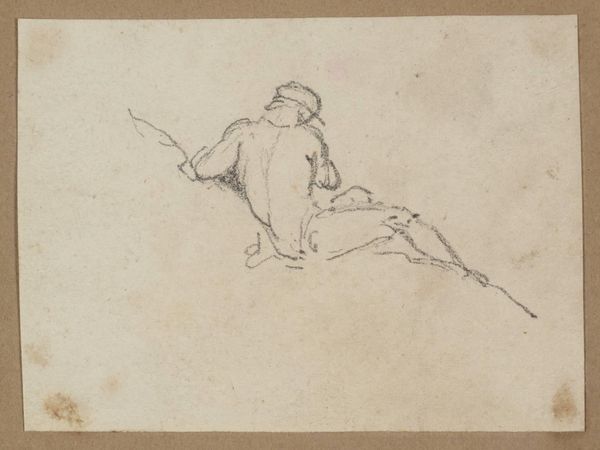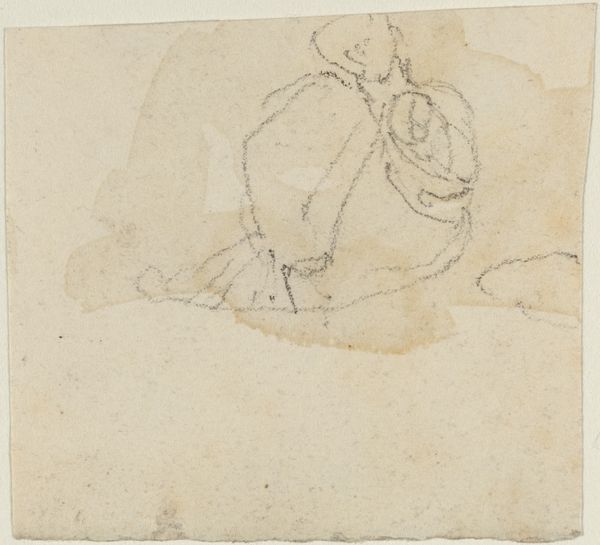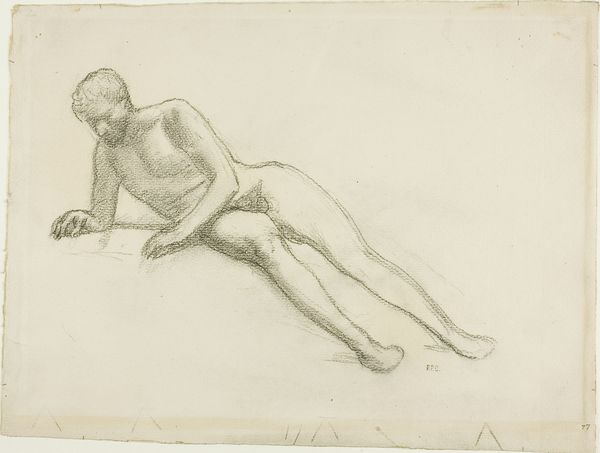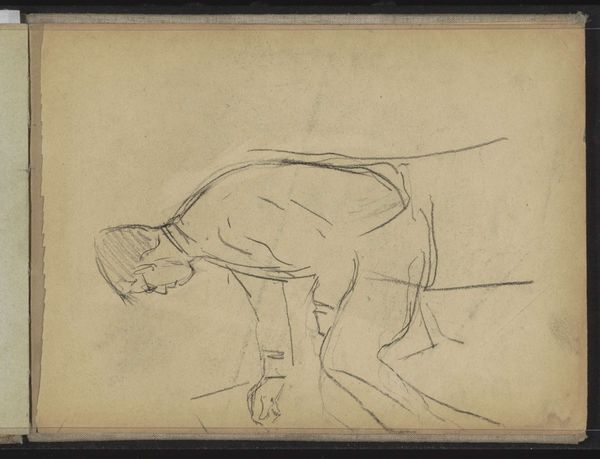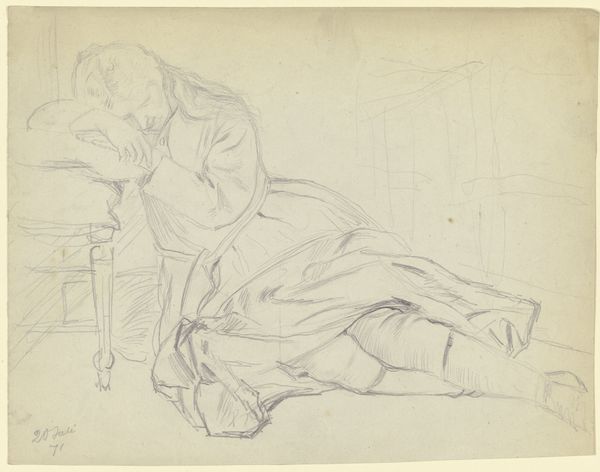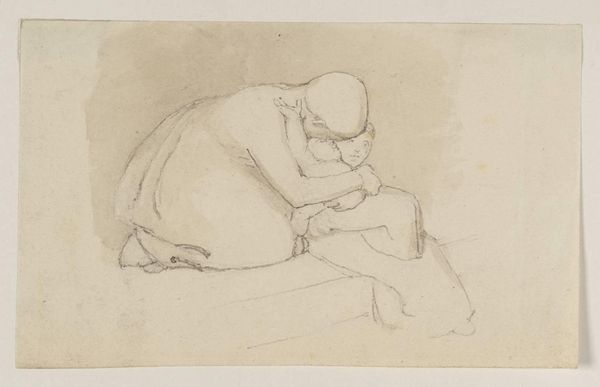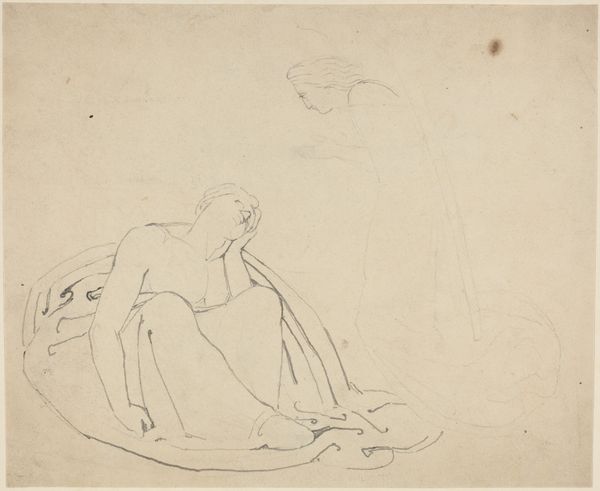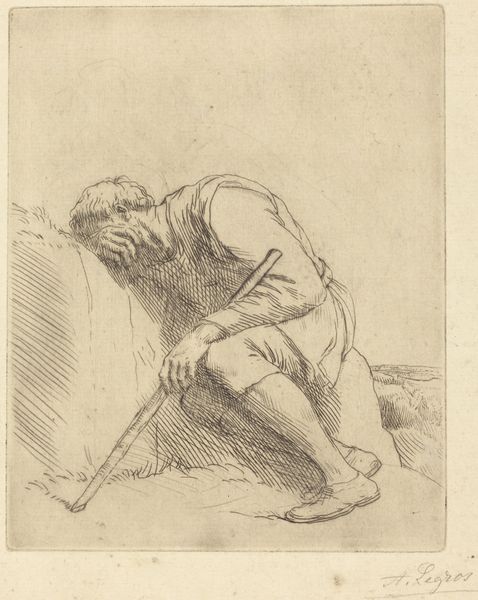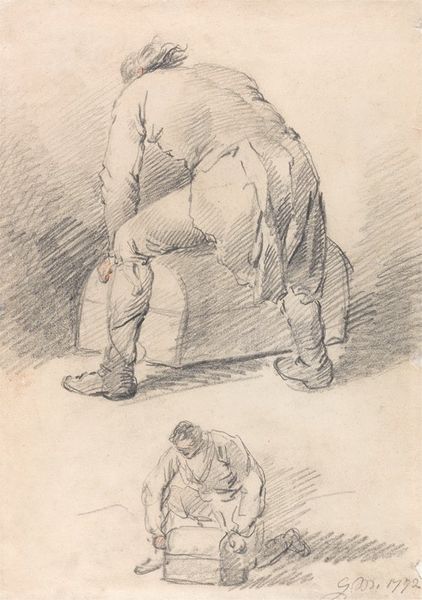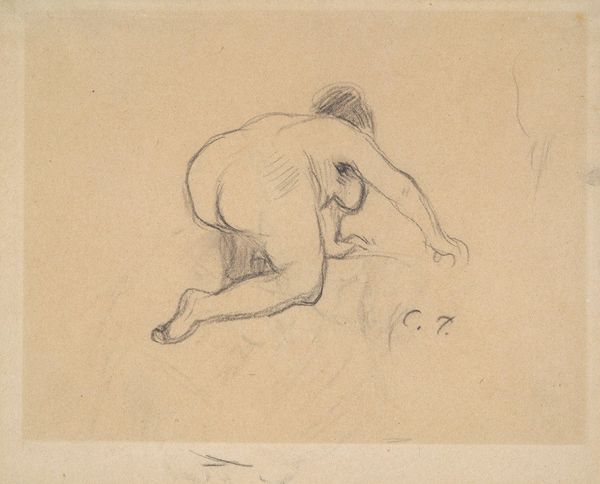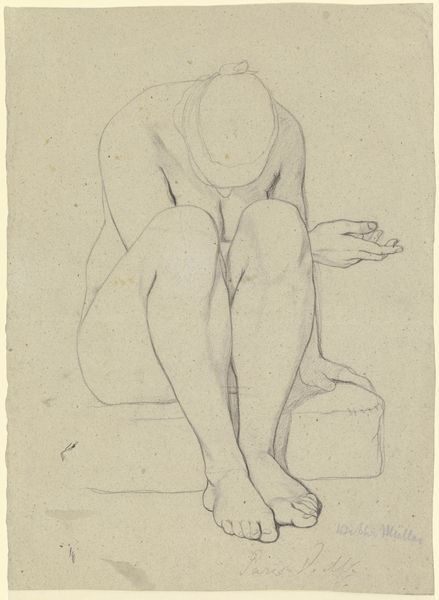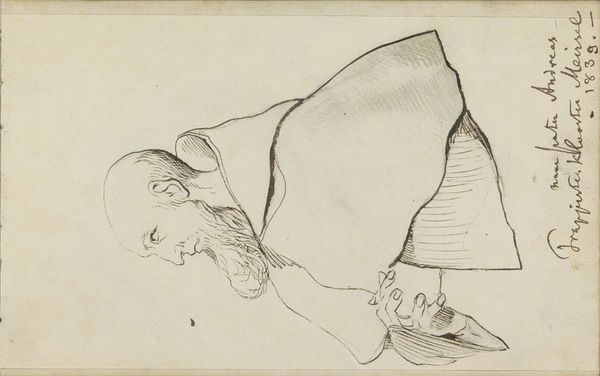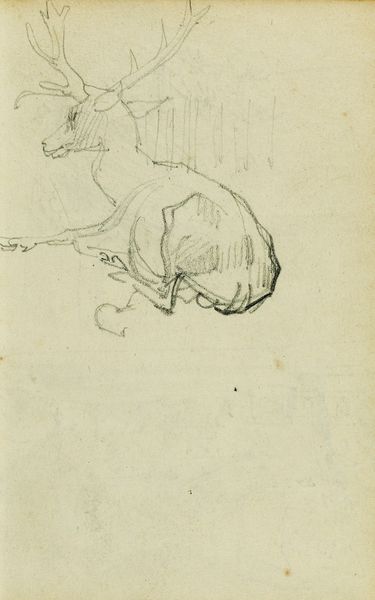
drawing, print, etching, pencil
#
portrait
#
drawing
# print
#
etching
#
pencil sketch
#
pencil
#
genre-painting
#
realism
Dimensions: 104 mm (height) x 139 mm (width) (plademaal)
Curator: This is Erling Eckersberg’s work titled "En bonde, som trækker strømpe på," which roughly translates to "A farmer pulling on a sock," created sometime between 1808 and 1889. The piece, residing here at the SMK, is rendered through etching and pencil on paper. Editor: The figure has a beautifully delicate appearance. You can almost feel the rawness and humility just by looking at the work, and its candid nature certainly makes it feel very approachable. Curator: I agree, there’s a fascinating tension between the supposed simplicity of the subject matter and the complexity of its production. Think about the etching process itself—the labor involved in creating the plate, applying the ground, etching the lines, and then finally pulling the print. The material reality speaks of access and means of production within the art world, and who exactly can depict rural laborers. Editor: Precisely. How images of peasantry were disseminated says much about the urban elite and the projection of cultural power. Who had access to such imagery, and what political or social narratives did these pieces perpetuate? This was a time of great social change. Consider the power dynamics at play in depicting rural laborers during a period of urbanization and agricultural reform. Was this meant to celebrate a disappearing way of life or perhaps serve as a commentary on class structure? Curator: Exactly! The materiality of this print – the specific type of paper, the ink used – speaks to broader trends of resource consumption and artistic production of that time, how artists depicted and interacted with materials reflected the economic and industrial landscape. We must delve into understanding where those pencils, paper and acids were sourced and at what expense? It emphasizes the work inherent in image creation. Editor: Furthermore, where was this drawing exhibited and circulated? Was it meant for public consumption, or more exclusive circles? This dictates how its message would've been perceived by its viewers. And what are the art historical discourses it speaks to in regards to depicting peasantry at work or rest? Curator: Right. These types of observations can truly add layers of insight into the history behind these prints! It’s a striking example of how seemingly straightforward images are always intertwined within broader systems. Editor: I concur, approaching art in this fashion reminds us how intertwined art, labour and culture have always been, it really changes our understanding of pieces such as these!
Comments
No comments
Be the first to comment and join the conversation on the ultimate creative platform.
